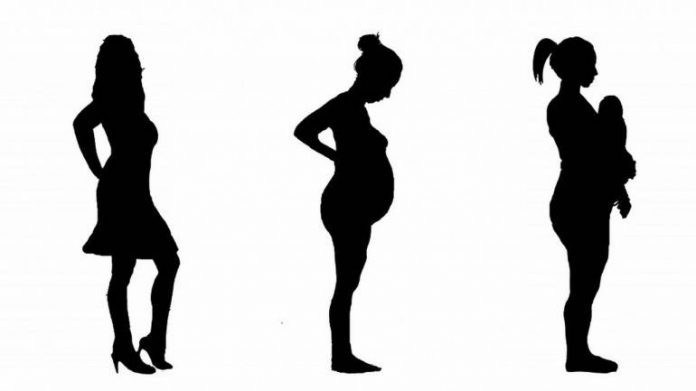The article is written by Nikhil Thakur, from Manav Rachna University. The author has touched upon the bedrock principles concerning maternal as well as paternal leaves. Further, the author has explained the major differences or similarities among them.
Table of Contents
Introduction
Childbirth and its rearing is not just the responsibility of women, indeed of men also. Hence, in 2017, a remarkable step was taken by the Indian government bypassing the new Maternity Bill which allows the women/ mother to have maternity leaves up to 26 weeks which was earlier only 12 weeks.
In India, paternity leave is not stipulated anywhere, unlike maternity leave, paternity leaves are not mandatory to be allowed by private organizations. But, few international corporations are taking steps in ensuring paternity leaves like Microsoft, IKEA etc.
Offering parental leaves namely maternal as well as paternal are essential to employees work, as it allows the workers to fulfil their parental obligation. The Indian government has established a few laws and acts that ensure women’s priorities along with the protection of their tenure/ job. The government has always been proactive when it comes to women as it ensures that women are uplifted and not discriminated against.
Maternal and paternal leaves – meaning and scope
Maternity leaves
As per major universal human right treaties, motherhood protection is considered a fundamental labour right. Article 25 of the Universal Declaration of Human Rights (UDHR) states that motherhood and childhood shall be given special care and assistance.
According to Merriam-Webster, “Maternity Leave” means the time which the woman has taken off from work to care for her newborn child.
A women employee who has been working under the same manager or employer for at least 80 days amid the 12 months before the date of anticipated birth, shall be entitled to maternity leave in India.
An important ingredient of the abovementioned criteria is; 80 days under the same employer (this 80 period is not carried forward to the new employer).
Paternity leaves
Paternity leaves are provided to ensure that the father and the newborn child create a healthy relationship among them. In India, paternity leave is 15 days before or within the 6 months of anticipated birth. Like the mother, the father has some responsibilities towards his wife as well as a newborn child.
According to Merriam-Webster, “Paternity Leave” means the period taken off by the father after the birth of the newborn child.
In case, the father does not avail of the leave within the stipulated period he shall be paid for such leaves equivalent to the sum if he had taken the leave. The scope of paternity leave extends to adoption cases also.
Ways in which law identifies both the leaves
Paternity leave
Agreeing to the Paternity Benefit Bill, 2017, all the labourers or workers indulged in unorganized or private sector shall have the right to claim paternity leave (15 days). This period is extendable up to 3 months.
Similar to maternity leave, if a male employee has been working in an organization for more than 80 days the same shall be entitled to claim for paternity leave. Paternity leaves are computed on a day by day wage basis paid to the worker for the number of days spent by him.
The instant Act of paternity observed that equal parental benefits shall be ensured in favour of mother and father. In the year 1999, via Central Civil Service (Leave) Bill Rule 551 (A) the central government employees have ensured paternity leaves, and the leave was for only 15 days in the case when the employee had less than 2 surviving children.
Alongside the Maternity Leave Act, 2017 the Paternity Benefit Bill was proposed in the Lok Sabha. The objective or the thought behind the said bill was to recognize that the father plays a pivotal role in child-rearing and to ensure that the father creates a healthy relationship with his child without any compromise.
The Metropolitan Magistrate, as well as the Magistrate of first-class, shall have the appropriate jurisdiction to try the offence under this act along with this all the issues concerning sanctioning of paternity leaves shall be held before them.
Maternity leaves
The Government of India in the year 2017 passed the Maternity Benefit (Amendment) Act, 2017 with the sole purpose to ensure protection to women at the time of their pregnancy and providing paid leaves in her absences. But the ingredient of the aid requirement is that maternity leave can be claimed only where the establishment has 10 or more than 10 employees.
The establishments which are covered with the purview of the maternity act are as follows:
- Government establishments;
- Mines;
- Shops;
- Factories;
- Plantation and so on.
To claim the benefit of maternity leaves in the abovementioned establishments the women must be employed for at least 80 days within the previous 1 year. The paid leaves are equivalent to the daily wage she has been earning.
Fortunately, the government defying the previous requirements has now augmented the period for leave of pregnant women from erstwhile 12 weeks to 26 weeks. The said period can be utilized on a split basis which depends on the women. This scenario is applicable up to the delivery of 2 children. In case, the women require to leave for 3rd child then the leave period is 12 weeks which can also be utilized on a split basis and is upon the women to decide.
12 weeks of leave is allowed in case the mother has an adoptive child and is below the age of 3 months. Further, the woman who is using her egg to form an embryo and get it planted in another woman (surrogate mother) in such a case can claim 12 weeks of leave.
Key highlights of the Maternity Leave (Amendment) Act, 2017:
- Maternity leave time duration has increased from erstwhile 12 weeks to 26 weeks,
- Women seeking leave for the 3rd child can claim to leave benefit up to 12 weeks,
- Women can claim 12-weeks maternity leave for the adoptive child if below 3 months of age,
- Women can claim for 12 weeks of maternity leave in case she is using her eggs to form an embryo in another woman,
- In an establishment, if the employees are more than 50 the employer shall provide the creche facilities,
- Mothers who are working can claim the benefit of work from home (depends upon the nature of work),
- That the employer shall give in writing and inform all the benefits available to the women at the time of commencement of their employment.
Paternity leave – a rising sight in modern society
In India, all the provisions made in respect to paternity leaves apply only to government servants. It does not extend to employees working in private sectors or organizations. Fortunately, India has taken steps in respect to paternity leaves which symbolises the change in the trend:
- The ministry of child and women has raised the issue of paternity leave in organised/ private sectors.
- The paternity bill has been proposed for the parental benefit scheme fund, where the employer, employee, as well as the central government, will be contributing a certain sum which shall be utilized by the beneficiary as a paternity benefit scheme.
- There are few national as well as international corporations that are providing paternity leaves voluntarily; that zomato has been providing 26 weeks of paternity leave along with 69,000 rupee benefits to their employees who have recently become parents, TCS provides 15 days of paternity leave, WIPRO is providing 8 weeks of paternity leave while Infosys is providing 5 days of paternity leave.
- Indian cricket captain Virat Kohli has taken paternity leave for his newborn child during the Australia tour.
Besides the governmental and private sectors steps in this respect; the judiciary has also played an important role in ensuring paternity right as it is evident from the case Chander Mohan Jain v. N.K Bagrodia Public School (2009), where the hon’ble court observed that all the male employees who are from unaided recognized private schools shall have the right to claim for paternity leave.
Hence, it is clear that the trend has been changing and equal importance is given to paternity leave. Father’s role in the family has been recognized as he plays an important part by ensuring moral support to his wife during pregnancy and establishing a healthy relationship with his newly born child.
Maternity leaves vis a vis paternity leaves
When compared with maternity leave, there is no explicit law concerning paternity in India. Maternity leave is specifically governed by the Maternity Benefit Act, 1961 and it recently got amended in the year 2017 which enhanced the benefits to pregnant women by increasing the leave duration from 12 weeks to 26 weeks along with other benefits.
In that respect, India had only Central Civil Service (Leave Rule), 1972 which ensured paternity leave only to the government officials and was not extendable to private or organized sectors. Thus, aside from the 2017 amendment in the maternity bill, the paternity bill was proposed but was a complete failure. The bill so proposed ensured that the father can claim 15 days of paternity leave extendable up to 3 months from the date of birth of the child.
The said proposal included paternity leave for an adoptive child who is below the age of 3 months which applied to private, organized and unorganized sectors.
Unlike maternity leave the position of law concerning paternity leaves is as follow:
- That private corporation, organization and employers are not bound by law to ensure paternity leave in favour of male employees.
- A male civil servant following Central Civil Service (Leave Rule), 1972 can claim for paternity leave up to 15 days before delivery or within 6 months from the anticipated delivery date (applicable only till two children).
- The leave shall lapse if it is not availed by the civil servant within 6 months of the anticipated delivery date.
- And such paternity leave by the civil servant cannot be refused and even be claimed in the case of an adoptive child.
The need for both
Merely ensuring maternity leave and not giving due consideration to paternity leaves the traditional stereotype mindset that women belong to home and take care of their child will be strengthened.
The presentation of paternity leave alongside maternity leave is a nostrum for the gendered working environment, further, it would be a good step in tackling and conquering the traditional stereotype mindset.
Thus, tackling these stereotypes would be possible only via a national arrangement on paternity leave which shall include all the husband or father irrespective of their employment in any establishment. The requirement of today’s world is not just maternity oriented rather parental oriented where both father and the mother had an equal stake.
Both leaves are complementary to each other
Child care is not just the responsibility of the mother, indeed of the father too. Lack of paternity leave would not only take away the right of the father to establish a healthy relationship with the newborn child, but it would also indeed harm the woman’s role as caretaker of the child. The most precious thing for a new mother is the support that can be provided by no one else rather than by her husband.
Due to the overburden of childcare upon the mother, the results of the same are split over her workplace as well as her professional life or sometimes they prefer to leave the job permanently. Hence, allowing paternity leave would not altogether ensure that the father can take the role of a mother which is impossible but it could help the mother in some ways like moral support or a helping hand by the father which will surely reduce the burden upon the mother.
Conclusion
Childbirth, as well as child-rearing, are the most important part of the life of both the father and mother, hence, it shall be the duty of the government to ensure efficient and effective laws are enacted concerning the same. More clarity shall be given on paternity leave like maternity leave. These laws ensure that the involvement of the women workforce in the economy is not hampered and further emphasise health as an important aspect for both the mother and the newborn child.
The benefit of ensuring paternity leave would be that it eases the pressure and the stigma from the women and provides a belief that they are not the only ones to take care of the newborn child. Hence, paternity leave would be a panacea in ending the issue of the “motherhood penalty”.
References
- https://www.researchgate.net/publication/340128117_Rules_of_Maternity_and_Paternity_Leave
- https://shieldgeo.com/maternity-leave-benefits-in-india/
- https://www.mondaq.com/india/employee-benefits-compensation/583462/maternity-leave-in-india-increased-to-six-months
- http://blog.jurisprime.com/2019/01/30/535/?utm_source=Mondaq&utm_medium=syndication&utm_campaign=LinkedIn-integration
- https://byjus.com/govt-exams/paternity-leave-india/
- https://paycheck.in/career-tips/women-paycheck/women-legislation/maternity-and-paternity
- https://blog.ipleaders.in/paternity-leave-india/
- https://www.mondaq.com/india/employee-rights-labour-relations/877518/paternity-benefit-bill
- https://www.mondaq.com/employee-rights-labour-relations/854196/maternitypaternity-leave-anticipated-amendments-to-the-employment-act
- https://www.civilsdaily.com/news/paternity-leave-in-india/
LawSikho has created a telegram group for exchanging legal knowledge, referrals, and various opportunities. You can click on this link and join:
 Serato DJ Crack 2025Serato DJ PRO Crack
Serato DJ Crack 2025Serato DJ PRO Crack











 Allow notifications
Allow notifications



